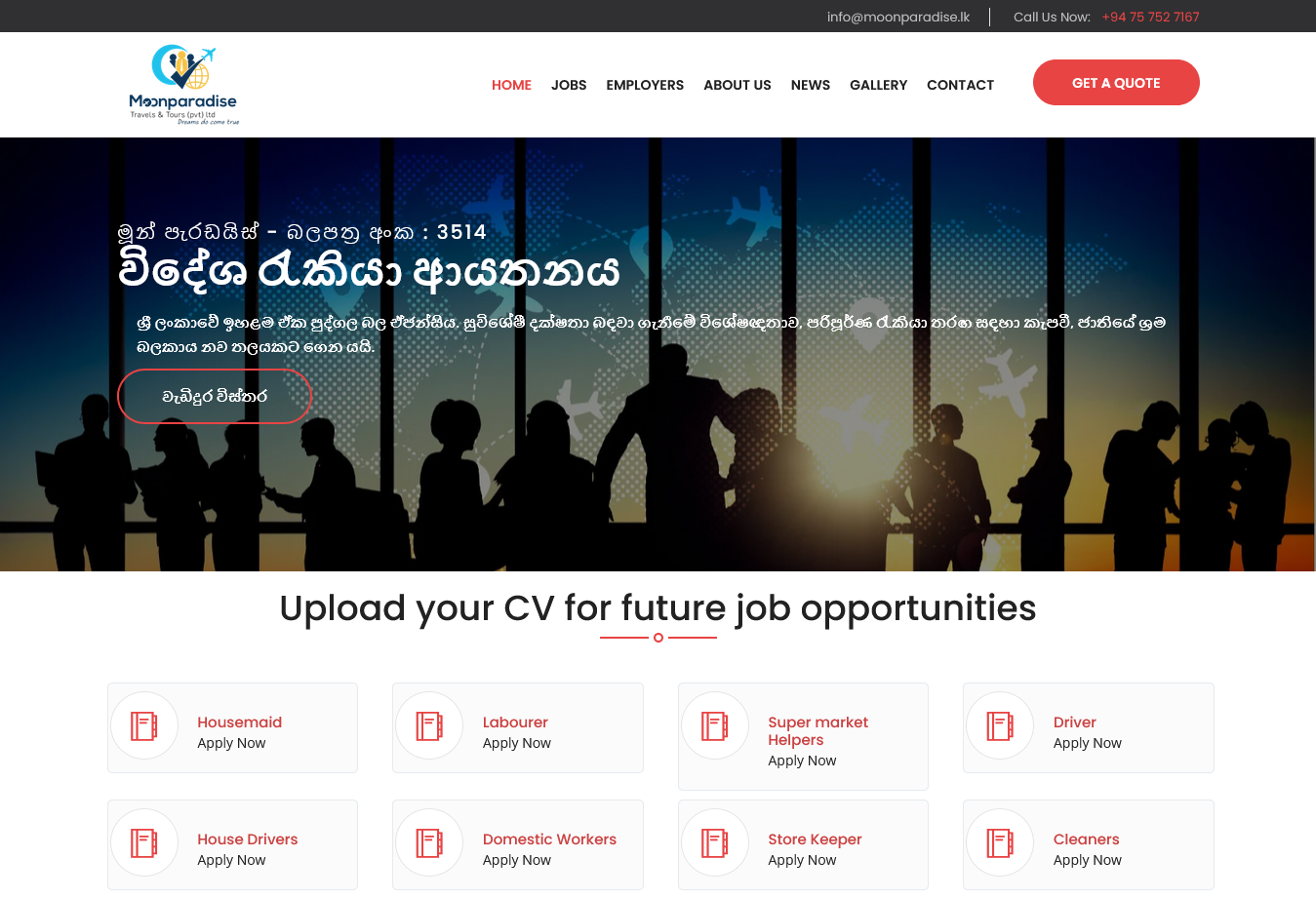Websites
Professional website development
mmmmmmmmmmmmYour Online Presence
In today’s digital landscape, a professionally designed website is crucial for establishing your brand’s online presence and engaging with your audience. We offer comprehensive website development services that include custom design, responsive layouts, and interactive features. Our websites are built with the latest technologies to ensure fast load times, high performance, and compatibility across all devices. We focus on creating websites that not only look great but also drive results and help you achieve your business goals.
Our Previous Works
Designed and developed websites for various industries, enhancing online presence and user engagement.
Website Pricing
Reach out for more information.
Starter
Server/ Hosting Free
SSL Certificate Free
Domain for 1 year Free
Initial SEO Setup Free
8 Incorporate Emails Free
Maintainance, Service, & Support 1 year Free
Standard
38,000LKR
Google Maps
WhatsApp integration
2 social media post
Content Management System
Blog / News Module
Manage Image Gallery
Social Media Profile setup
Google My Business Setup
Get started now
Server/ Hosting Free
SSL Certificate Free
Domain for 1 year Free
Initial SEO Setup Free
8 Incorporate Emails Free
Maintainance, Service, & Support 1 year Free
Premium
Custom
Unlimited pages
Full features
Ensuring your vision becomes reality without any restrictions or limitations
Get started now
Server/ Hosting Free
SSL Certificate Free
Domain for 1 year Free
Initial SEO Setup Free
8 Incorporate Emails Free
Maintainance, Service, & Support 1 year Free
Ready to get started?
Ready to transform your ideas into reality? Contact us today and let's begin creating innovative solutions together.
Call us on






